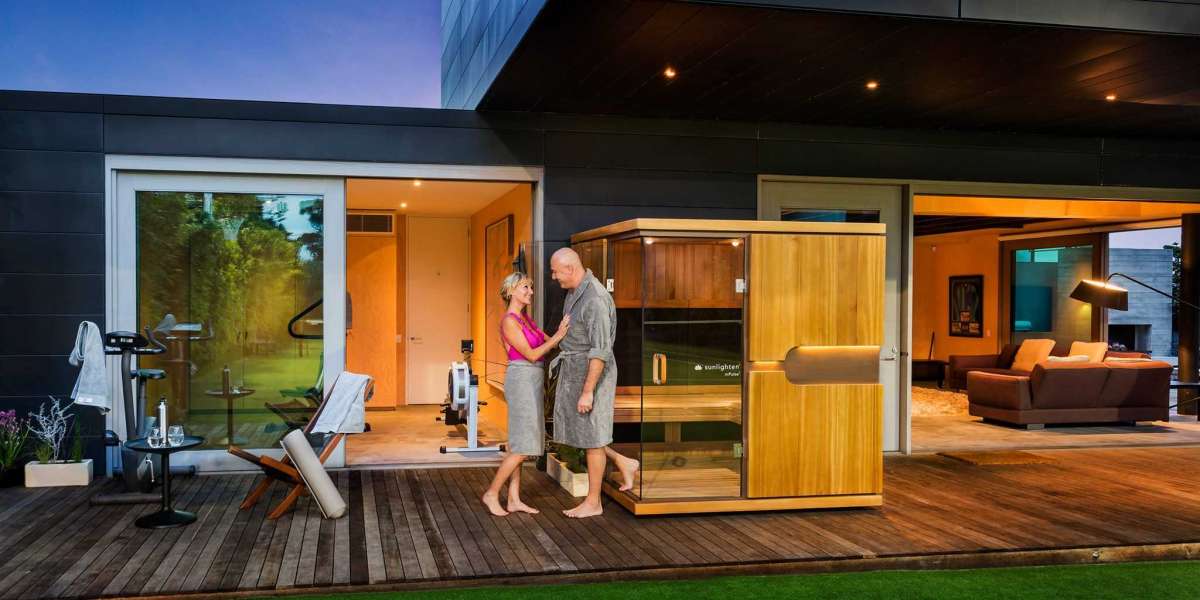An infrared sauna is a type of sauna that uses infrared heaters to emit radiant heat directly onto the body. Unlike traditional saunas that heat the air around you, infrared saunas penetrate the skin and heat the body from within. This results in a deeper and more targeted heat therapy experience.
How Does an Infrared Sauna Work?
Infrared saunas use infrared light waves, specifically far-infrared wavelengths, to produce heat. These waves are absorbed by the body, creating a gentle and therapeutic warmth. The temperature in an infrared sauna typically ranges from 120°F to 150°F, making it more comfortable for individuals who may find higher temperatures difficult to tolerate.
Health Benefits of Infrared Saunas
The health benefits of infrared saunas are numerous and well-documented. Some of the key advantages include:
- Detoxification: Sweating in an infrared sauna helps eliminate toxins from the body, promoting overall health and well-being.
- Improved Circulation: The heat from an infrared sauna increases blood flow, which can aid in relieving muscle tension, reducing inflammation, and promoting healing.
- Pain Relief: Infrared saunas have been shown to provide deep tissue relief, helping to alleviate muscle and joint pain.
- Relaxation and Stress Reduction: The gentle heat of an infrared sauna induces relaxation, reducing stress and promoting better sleep.
- Skin Health: Regular use of an infrared sauna can improve skin tone and appearance by promoting blood flow and eliminating toxins.
Infrared Saunas vs. Traditional Saunas
Heating Method
One of the main differences between infrared saunas and traditional saunas is the method of heating. Traditional saunas heat the air around you, which then heats your body through convection. In contrast, infrared saunas use infrared panels or heaters to emit radiant heat that directly warms your body.
Temperature
Infrared saunas operate at lower temperatures compared to traditional saunas. The average temperature in an infrared sauna ranges from 120°F to 150°F, while traditional saunas can reach temperatures of 150°F to 190°F. The lower temperature of an infrared sauna provides a more comfortable and enjoyable experience for those who may be sensitive to higher heat levels.
Health Benefits
Both infrared saunas and traditional saunas offer health benefits, but they differ in the way they deliver them. Traditional saunas are known for their ability to create a high level of humidity, which can help open up pores and aid in detoxification. Infrared saunas, on the other hand, provide a more gentle heat that penetrates deeper into the body, offering benefits such as increased circulation, pain relief, and relaxation.
Heat-Up Time
Infrared saunas have a shorter heat-up time compared to traditional saunas. The heat produced by infrared waves penetrates human tissue directly, resulting in a quicker warm-up period. In contrast, traditional saunas require more time to heat the air around you before you can begin to experience the benefits of the sauna.
Running Costs
While the initial investment for an infrared sauna may be higher, the running costs are generally lower compared to traditional saunas. Infrared saunas are more energy-efficient, using about 60% less electricity than traditional saunas. Over time, this can result in significant savings on your energy bills, especially if you use your sauna regularly.
Maintenance
Maintenance requirements for infrared saunas are generally minimal. You will need to keep the interior clean and free of dirt and debris, but overall, the maintenance is straightforward. Traditional saunas, on the other hand, require more upkeep. The wood must be regularly treated and maintained to prevent rotting or warping, and the rocks in the sauna will need to be replaced periodically.
Installation
Installing an infrared sauna is typically easier compared to a traditional sauna. Infrared saunas often come as prefabricated units that can be easily assembled and plugged into an electrical outlet. Traditional saunas, on the other hand, may require the help of a professional contractor for installation, as they need to be built from scratch. However, traditional saunas often have a higher resale value due to their custom-built nature.
Factors to Consider When Choosing an Infrared Sauna
Size and Space
Before purchasing an infrared sauna, consider the available space in your home. Measure the area where you plan to install the sauna to ensure it will comfortably fit. Infrared saunas come in various sizes, so choose one that suits your available space and desired seating capacity.
Heat Source
Infrared saunas use infrared panels or heaters as their heat source. Consider the type of heat source you prefer, as it can affect the overall heating experience. Some infrared saunas use carbon fibre panels, while others use ceramic heaters. Research and compare the pros and cons of each option to find the best fit for your needs.
Features
Infrared saunas can come with various features to enhance your sauna experience. Some common features include built-in benches, interior lighting, Bluetooth speakers, and digital control panels. Decide which features are important to you and prioritize them when choosing an infrared sauna.
Pre-Assembled vs. Self-Assembly
Another factor to consider is whether you want a pre-assembled sauna or one that requires self-assembly. Pre-assembled saunas are more convenient and can be set up quickly. Self-assembly saunas may require more time and effort, but they offer the flexibility to customise the sauna to your liking.
The Best Location for Your Infrared Sauna
Considerations for Placement
When deciding where to place your infrared sauna, consider the following factors:
- Select a location that will not disrupt your family's activities.
- Ensure easy accessibility so you can enjoy the sauna whenever you desire.
- Place the sauna on a level surface away from windows or doors.
- Optimise relaxation space by positioning the sauna in a corner of the room.
Using Design Apps for Visualization
If you're having trouble visualising the best location for your sauna, consider using a design app like iScape. These apps allow you to project the sauna into a photo of your interior or use virtual reality to get a better sense of how it will look in your space. This can help you make an informed decision and ensure the sauna fits seamlessly into your home.
Ensuring Proper Ventilation
Proper ventilation is crucial when installing an infrared sauna. Adequate ventilation helps prevent condensation buildup on the walls and ceiling of the sauna. Ensure there is sufficient airflow in the room where you plan to place your sauna to maintain a comfortable and safe environment.
Tips for Purchasing an Infrared Sauna
Before making a purchase, consider the following tips:
Research Reputable Brands
Take the time to research and compare different brands of infrared saunas. Look for reputable manufacturers with a track record of producing high-quality saunas. Read customer reviews and testimonials to gauge the satisfaction level of previous buyers.
Consider Warranty and Customer Support
Check the warranty offered by the manufacturer. A good warranty is an indication of the confidence the brand has in its product. Additionally, ensure that the manufacturer provides reliable customer support in case you encounter any issues or have questions about your sauna.
Read Reviews and Testimonials
Reading reviews from other customers can provide valuable insights into the pros and cons of specific infrared sauna models. Look for reviews that highlight the durability, performance, and overall satisfaction of the sauna.
Compare Prices and Features
Compare prices and features across different brands and models to find the best value for your budget. Consider the features that are important to you and prioritise them accordingly. Remember that investing in a high-quality sauna is an investment in your health and well-being.
Conclusion
Infrared saunas offer a range of health benefits and unique advantages that make them an excellent choice for relaxation, detoxification, and overall well-being. With their gentle heat, lower operating costs, and easy installation, infrared saunas provide a convenient and enjoyable way to experience the benefits of sauna therapy in the comfort of your own home. Take the time to research and compare different options, consider your preferences and needs, and make an informed decision when purchasing an infrared sauna for sale. Your path to improved health and relaxation starts with the perfect infrared sauna for your home.








